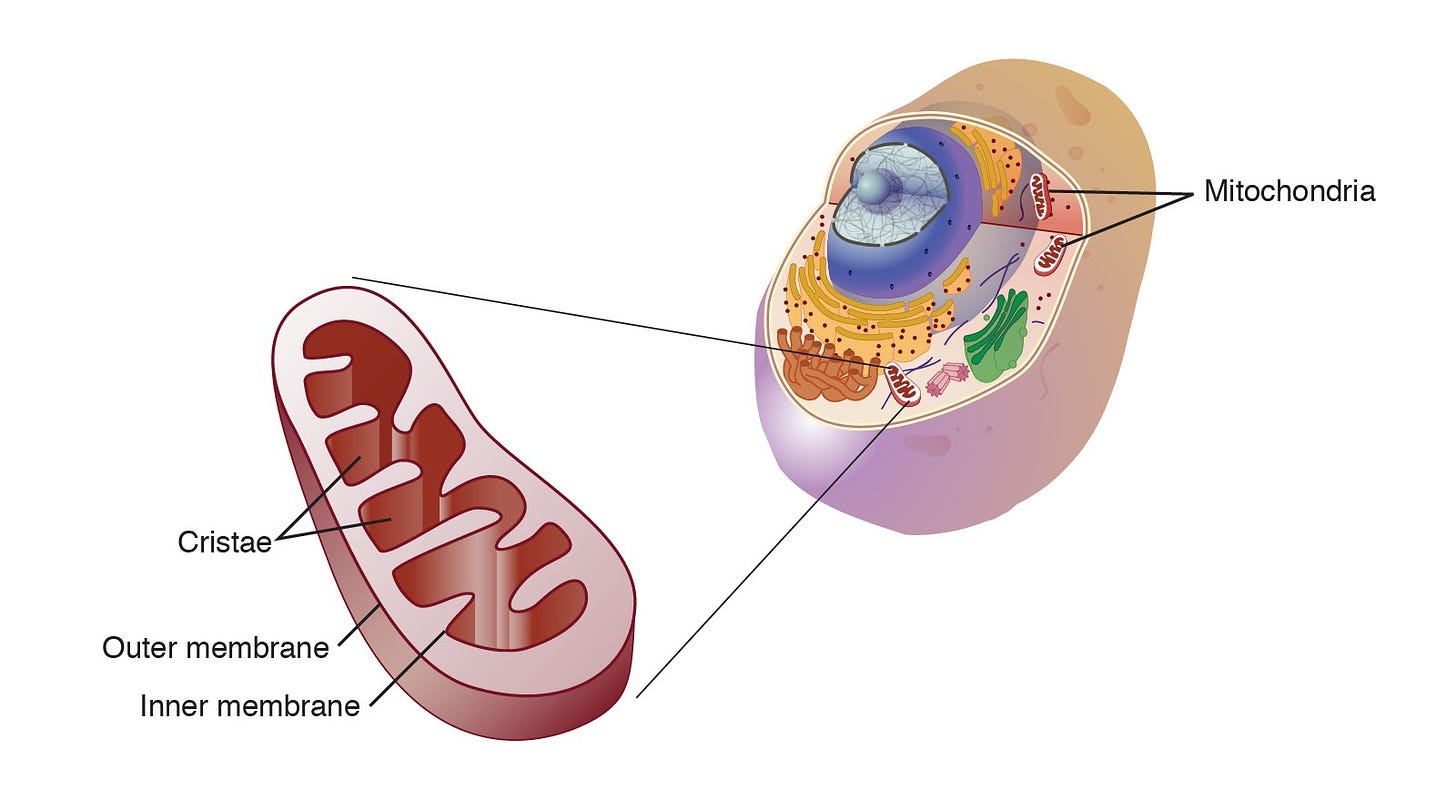Mother's Curse and the other DNA You Didn't Know You Have
Plus the tragic consequences of going against The Science
Interestingly, animal, plant and fungal cells all share common components, including a membrane, nucleus, cytoplasm, ribosomes and mitochondria.
Every cell in our body, with the exception of red blood cells, is home to one of these remarkable structures, known as mitochondria. These minute organelles are responsible for a multitude of vital functions that influence our health, well-being, and longevity. Often referred to as the "powerhouse of the cell," because they produce the energy we need to live, mitochondria stand as one of the most intriguing and complex structures in the field of cellular biology.
The term "powerhouse of the cell" has long been associated with mitochondria and for a good reason. Mitochondria are the primary site of energy production in eukaryotic cells (a cell with a nucleus that houses genetic material). They generate energy in the form of ATP (adenosine triphosphate) through a process known as cellular respiration. Basically, they burn our food, using oxygen, to create energy.
The first glimpse of mitochondria was observed by Richard Altmann, a German biochemist, in 1886. He noticed granules, which he named "bioblasts," within the cell. However, the significance and function of these structures were unclear at the time, and the knowledge regarding them remained elusive for several years.
Paid subscribers can continue reading about the fascinating mitochondria. Find out about the other DNA you never knew you had, as well as the tragic consequences of following the science.
Keep reading with a 7-day free trial
Subscribe to The Naked Emperor’s Newsletter to keep reading this post and get 7 days of free access to the full post archives.




